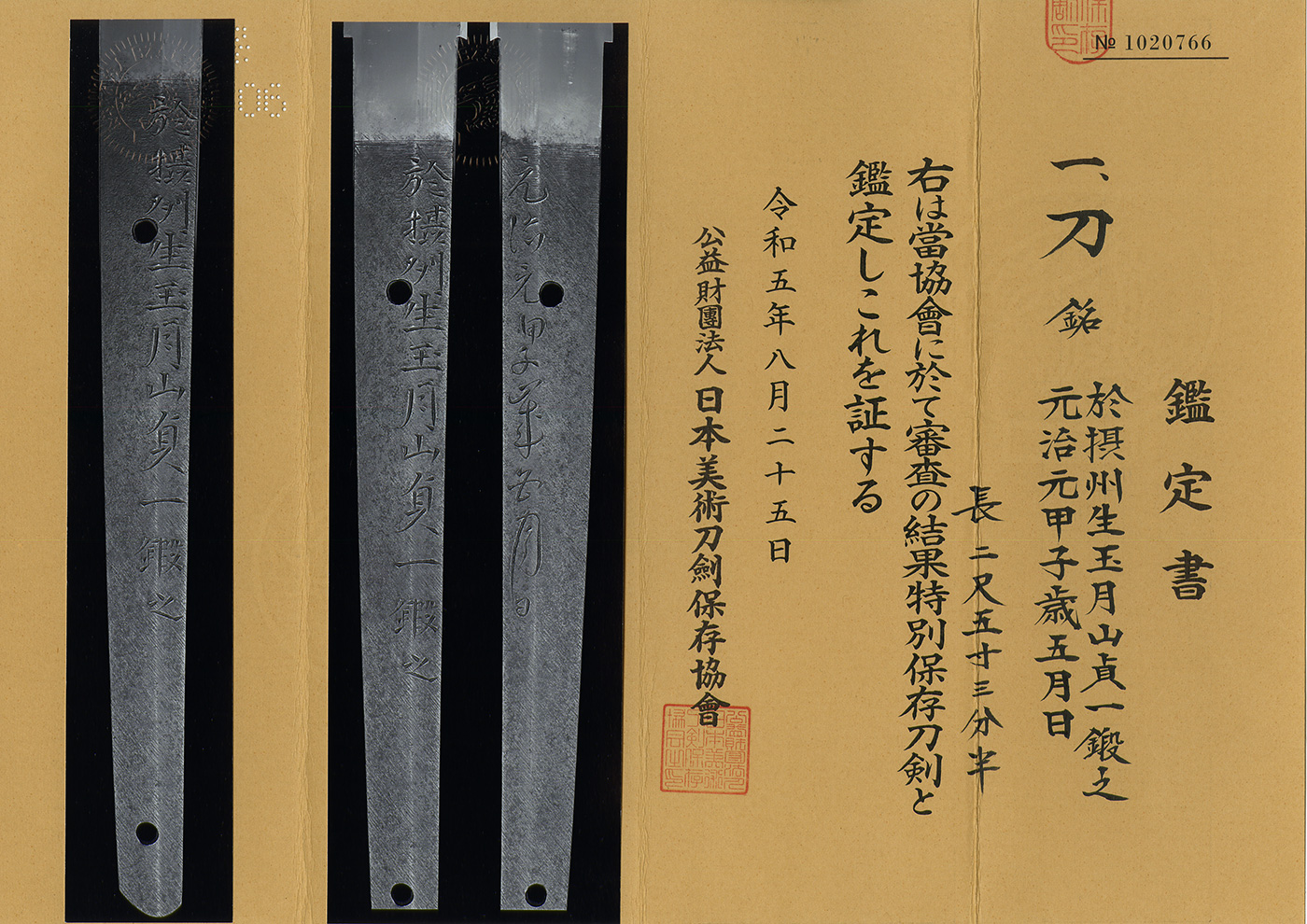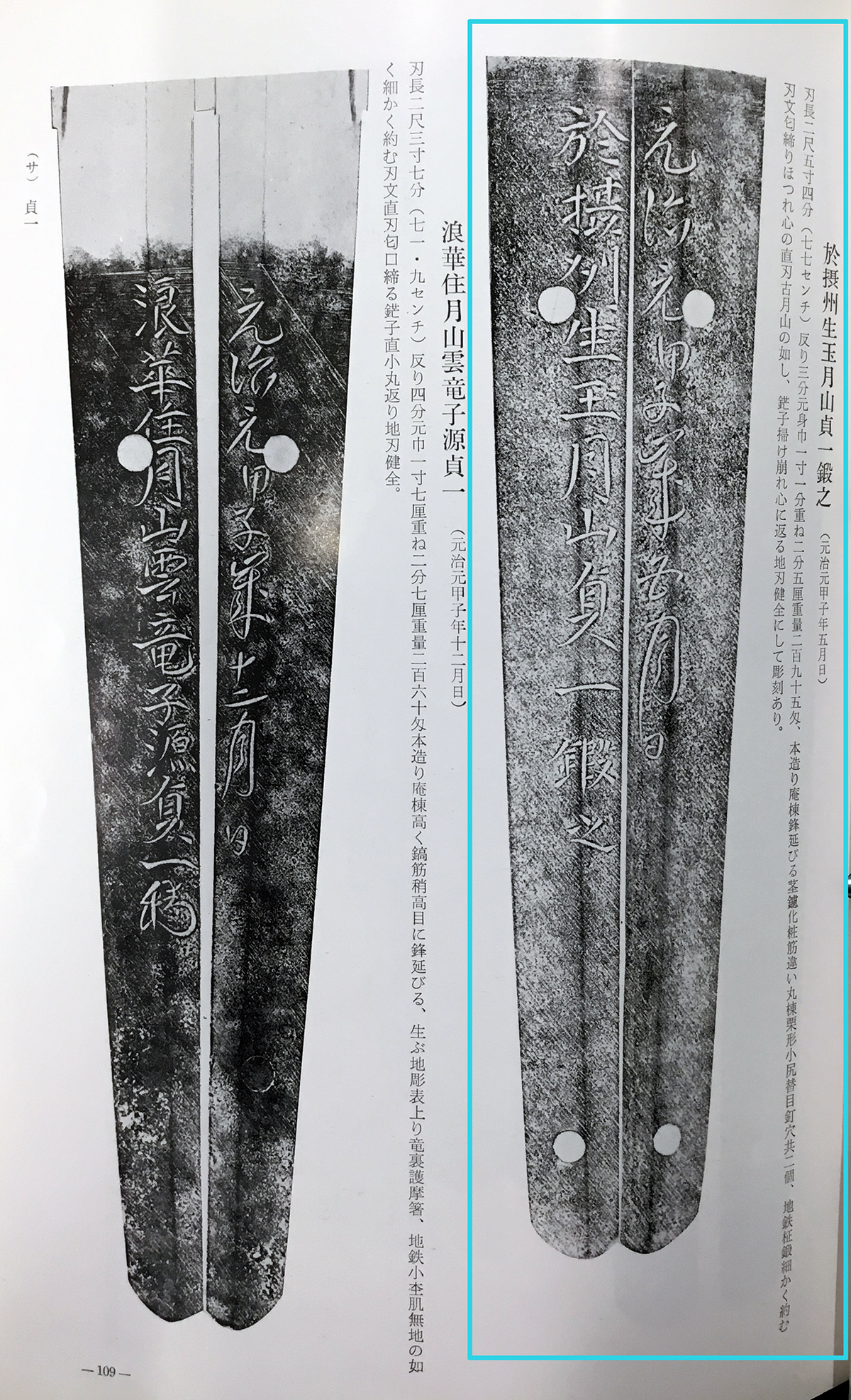Ordering number:24060
Katana in Shirasaya (NBTHK Tokubetsu Hozon Token)
Signature: Oite Sesshu Ikutama Gassan Sadakazu Kitae Kore
Ganji Kinoe-Ne Nen 5 Gatsu Hi(May 1864)
於摂州生玉月山貞一鍛之
元治元甲子年五月日
(We divide 4 sections for each sword as Saijyo saku, Jyojyo saku Jyo saku and regular saku)
This sword belongs to Jyo Jyo saku ranking.
Polished.
Gold Foiled Single Habaki.
Blade Length: 76.9 cm (30.27 in).
Curvature: 1.2 cm (0.47 in).
Mekugi Hole: 2.
Width at Base: 3.31 cm (1.3 in).
Width at the Tip: 2.38 cm (0.94 in).
Thickness of rim (Kasane): 0.85 cm (0.33 in).
Sword Weight: 1045 grams.
Era: Edo period, first year of Genji, May. (May 1864)
Shape: The blade has a wide body, thick Kasane, a somewhat deep curve,
and an extended Kissaki. The omote (front) is engraved with a dragon,
Bonji (Sanskrit characters), and the sun. The ura (back) is engraved with a spear,
Bonji, and both Soe-Hi and Bo-Hi grooves.
Jigane: Well-tempered Itame Hada with visible grain.
The landscape of the Jigane is Masame, which is clearly visible.
Hamon: Nie Deki, straight Hamon with Notare, double Hamon,
and chaotic Midare at the Boshi with Kinsuji. In the Hamon,
there are Sunagashi and Kinsuji.
Features: This Gassan Sadakazu is a rare work with the signature “Oite Settsu Ikutama Gassan Sadakazu Kitae Kore,” and has a cutting length of approximately 77 cm, and also features correct workmanship with an engraving of a dragon, making it a magnificent work. The engraving on the back is also splendid, featuring a spear and Bonji, as well as both Soe-Hi and Bo-Hi grooves, making it an exceptional piece. The first generation Gassan Sadakazu, a swordsmith from Settsu, was born in February 1836 in Goshu Sugoe village and became the adopted son of Gassan Sadayoshi at the age of seven. He began his training around the age of eleven and is said to have mastered the Ayasugi Hada by his twenties. After the Sword Abolition Edict in Meiji 9, he continued making swords and in Meiji 26, he submitted a sword to the Chicago World’s Fair and won an award, and the following year, his work was purchased by Emperor Meiji. In April Meiji 39 (1906), he was appointed as an Imperial Household Artist. He was also famous as a master carver and died on July 11, Taisho 7 (1918) at the age of 84. His works can be seen from the age of 15 in Kaei 3 (1850) until the year he died, Taisho 7 (1918).
Aoi Art’s Comment: Gassan Sadakazu lived through the difficult times of the Sword Abolition Edict in the late Edo period and continued to live as a famous swordsmith and teacher as an Imperial Household Artist at the beginning of its repeal. He worked on all types of swords and possessed unparalleled skill in swordsmithing traditions such as Soshu-den, Yamato-den, Bizen-den, Mino-den, and Yamashiro-den, as well as in sword carving. Especially, this piece, with its Masame work and splendid carving, is highly recommended. Moreover, this work is listed on page 109 of the Shinshinto Taikan.
NBTHK Tokubetsu Hozon Token
Aoi Art estimation paper
Whole Oshigata





